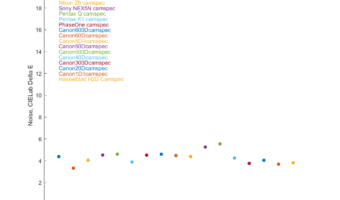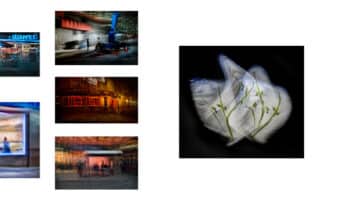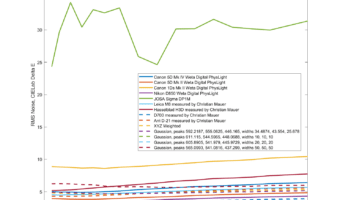I’ve added 17 more cameras to my test suite. The results: Same trends apply. Older CCD cameras are worse for SMI, except for the NEX-5N, which has lousy SMI. Not a lot of difference wrt the CFA’s effect on noise.
Using InDesign to lay out an exhibition
In the past, when there’s been no curator to sequence, size, and position the images for an exhibition, I’ve done it using Visio. I’ve got an exhibition coming up, and there’s no curator, so I need to do the lay0ut myself. This time, I decided to see if I could use InDesign. Turns out it… [Read More]
Hasselblad CFV 100C on Hasselblad 907X
Last fall, Hasselblad asked me to evaluate advance copies of the CFV 100C and 907X. This review is based upon that evaluation. At Hasselblad’s request, I have delayed publication of this post until the public announcement of the camera, which occurred today. The CFV 100C is a back for a V-series Hasselblad based on the… [Read More]
Visible noise and CFA filter spectra, part five
Continuing my exploration of the effects on color accuracy and image noise in various cameras, I ran my simulation on a group of cameras with lighting from D22 through D90. Here’s what I got for color accuracy, using sensitivity metamerism index (SMI) as the metric: With the exception of the Sigma DP1 Merrill, which is… [Read More]
RRS L bracket for GFX 100 II — quick review
I just got mine. Typical high RRS quality. Allen wrench mounts in the base using two clips. If you’re not careful when you pull the Allen wrench out the clips will come with it. Just slide them back in. But do that before you mount the plate to the camera, because you can’t put them… [Read More]
- « Previous Page
- 1
- 2
- 3
- 4
- 5
- 6
- …
- 560
- Next Page »


